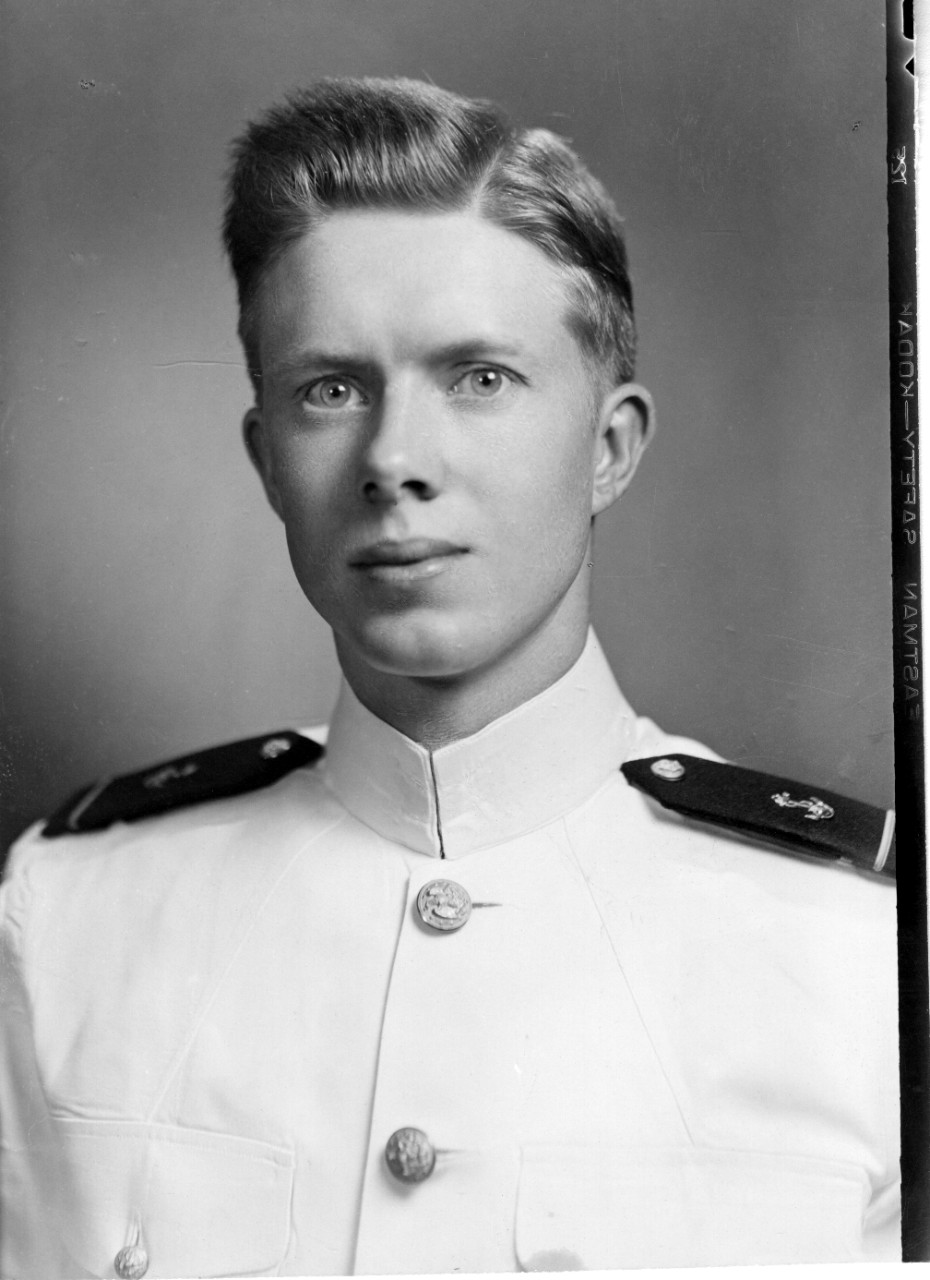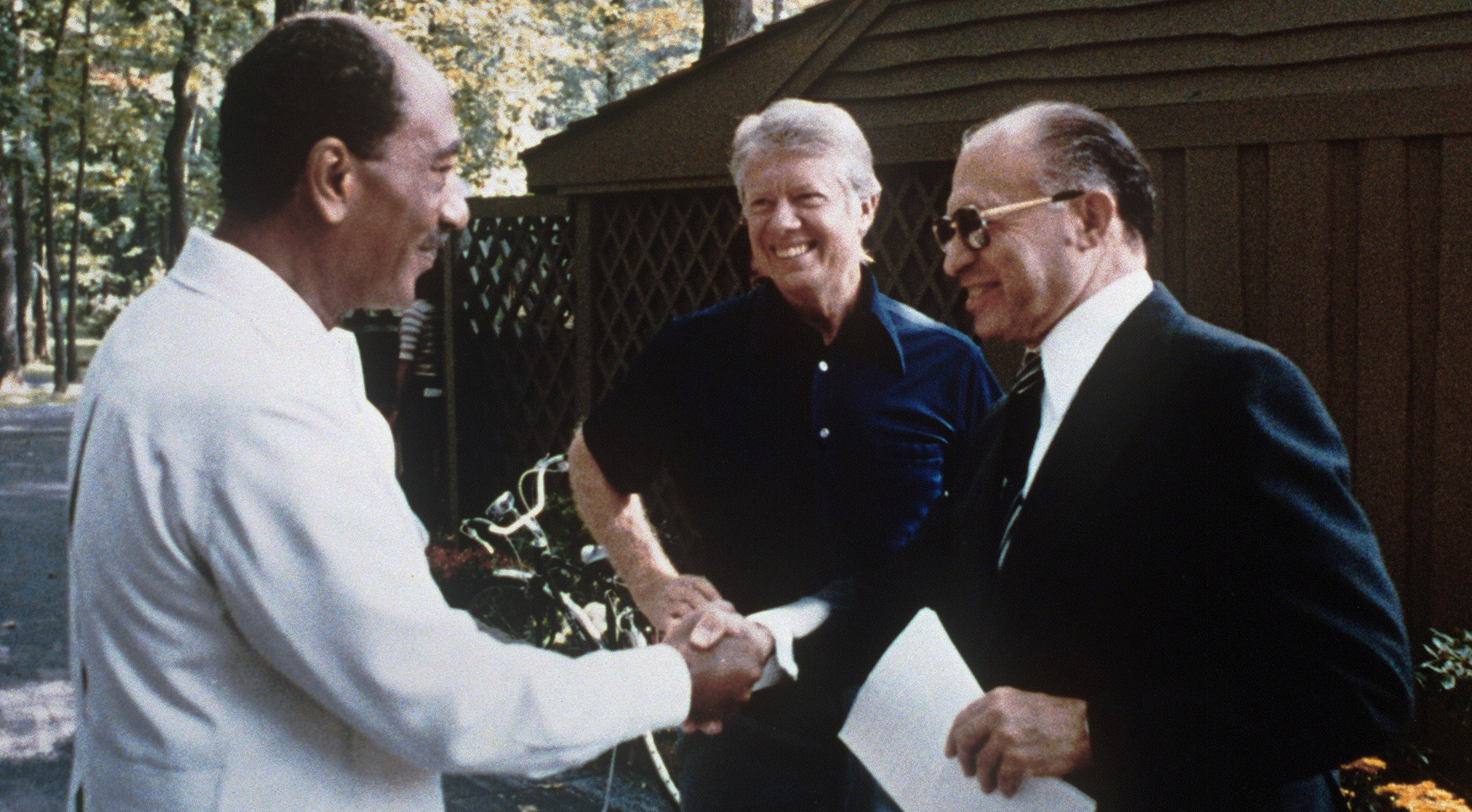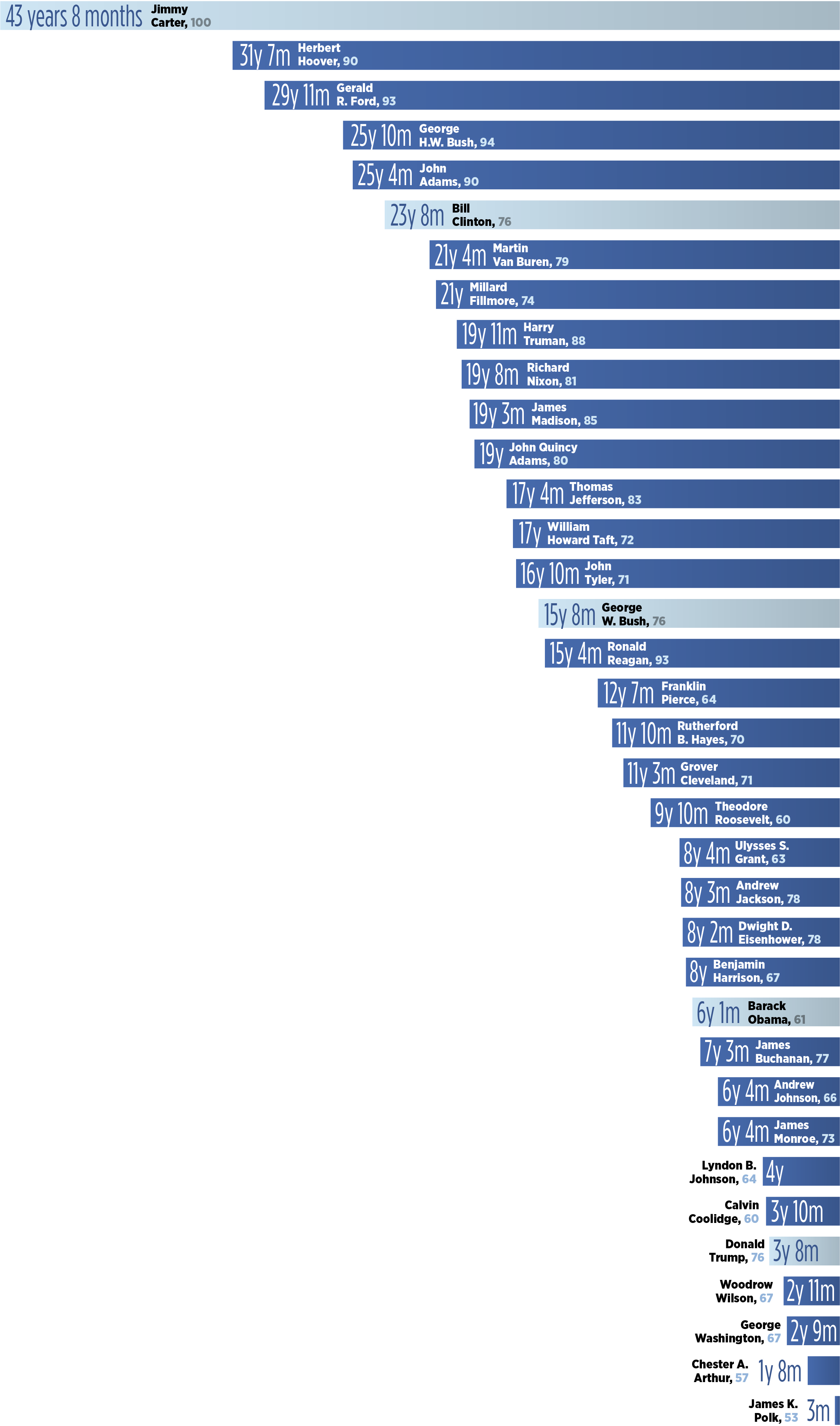
Jimmy Turns 100: A celebration of Jimmy Carter's life, and the expectancy of life after becoming a president.
Jimmy Carter left Washington, D.C., in January 1980, soundly defeated after a single term marked with economic woes, an inability to work with Congress and a hostage crisis in Iran.
After his return to Georgia, however, Carter launched a nonprofit to promote and expand human rights worldwide. His work with the Carter Center would earn him a Nobel Peace Prize in 2002 and a Presidential Medal of Freedom.
The longest-lived ex-president in our nation’s history turns 100 today.
The product of several generations of Georgia farmers, James Earl Carter opted instead to study engineering at Georgia Southwestern College and then Georgia Tech. He transferred to the U.S. Naval Academy in 1943 and entered service upon his graduation.
In 1952, he was selected to work with a Naval branch working on the design and development of nuclear submarines. Later that year, he was put in charge of a crew tasked with shutting down a partially melted-down reactor at Chalk River, Canada. For six months afterward, his urine tested positive for radioactivity, he later said.
The next year, Carter was about to become the engineering officer aboard the USS Seawolf when his father died. He and his wife, Rosalynn, moved back to Plains, Georgia, so he could take over the family peanut farming business, which wasn’t doing so well.

Carter as a midshipman, credit to U.S. Navy.
Once he turned things around, Carter dove into politics — first as a state senator and then as a two-term governor of Georgia. When he declared his candidacy for president in 1974, national newspaper headlines and magazine covers asked: “Jimmy Who?”
President Gerald Ford was under fire for failing to resolve runaway inflation and for pardoning disgraced former President Richard Nixon. In November 1976, Carter won by just 2.1% of the popular vote.
One of his first actions in office was to fulfill a campaign promise to give unconditional amnesty to Vietnam-era draft evaders. In September 1977, he signed a treaty that would relinquish control of the Panama Canal to Panama by 2000.
A year later, Carter brought together Israeli Prime Minister Menachem Begin and Egyptian President Anwar Sadat for a series of peace talks at Camp David. The following March, they signed a formal peace treaty ending the conflict between those two countries.

Carter with Egypt’s Anwar Sadat, left, and Israel’s Menachem Begin, right, at Camp David in September 1978, National Archives
n December 1980, the Soviet Union invaded Afghanistan. Carter responded by placing an embargo on the transfer of technology — and cutting the sale of American grain — to the Soviet Union. He later withdrew the U.S. from the 1980 Summer Olympics in Moscow.
But Carter’s term may be best remembered for two things that proved to be outside his control. The first of these was high inflation and the ongoing effects of a recession from the early 1970s.
In July 1979, Carter made a TV address in which he told the nation it suffered from a “crisis of confidence.” It would come to be known as his “malaise” speech, although he never used that word.
The Iranian hostage crisis also became a huge issue in the 1980 presidential campaign. That November, Ronald Reagan would defeat Carter by 489 electoral votes and Republicans would win control of the Senate for the first time since 1952. Only on the day Reagan took office did Iran release the 52 American hostages, after 444 days of captivity.
Throughout his lengthy retirement, Carter traveled — sometimes officially and sometimes not — around the world to investigate human rights abuses, to ensure fair elections, to promote democracy and economic growth, to help eradicate infectious diseases and to help negotiate arms treaties.
Carter participated in homebuilding efforts with Habitat for Humanity and wrote more than 20 books — from memoirs to humanitarian work to poetry and a children’s book.
After a number of surgeries, treatment for cancers and injuries from falls, Carter entered hospice care in February 2023. Rosalynn died in November at age 96.
Life Expectancy After Presidency

Presidents who died in office.
